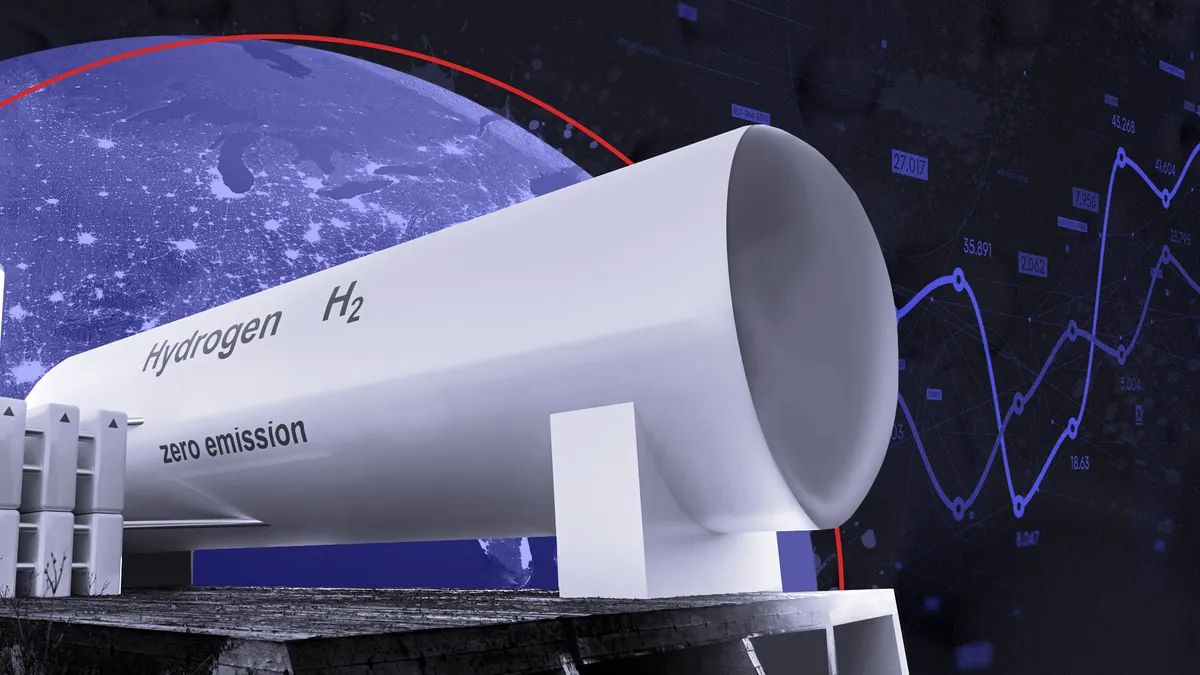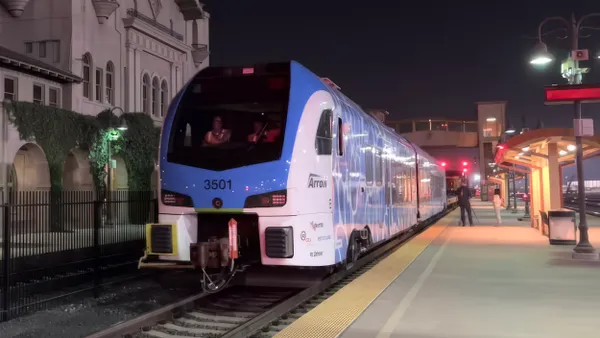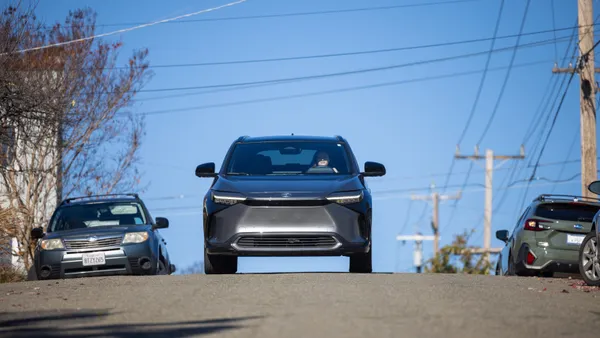Dive Brief:
- The California Energy Commission awarded $2 million to Symbio, a joint venture between Michelin and Faurecia, to develop a hydrogen-fueled Freightliner Cascadia Class 8 truck, part of a state-supported hydrogen mobility project, officials announced Tuesday.
- The Symbio H2 Central Valley Express project’s goal is to develop and demonstrate a hydrogen fuel cell truck for regional-haul operations that matches the performance of a 15-liter diesel engine.
- The truck, once built, will run for a year on a 400-mile route between Southern California’s Inland Empire and the Northern San Joaquin Valley, using hydrogen infrastructure provided by Aire Liquide, Shell and Trillium’s, beginning in the second half of 2023.
Dive Insight:
As fleets eye a carbon-free future, a clash between BEVs and FCEVs is quietly being waged over the future of the industry.
Amazon and UPS officials said last year that they see a place for hydrogen FCEVs in their fleets, as the vehicles are expected to be lighter, fuel faster and have longer range than BEVs. But both companies see hydrogen as further down the road than BEVs.
The Central Valley Express project is a chance to "address current commercialization barriers and accelerate the adoption of hydrogen-based heavy-duty mobility solutions in the goods movement market," Rob Del Core, general manager of Symbio North America, said in the announcement.
Symbio’s fuel stack technology, StackPack, will power the trucks, coupled with Faurecia's hydrogen storage system and Michelin's low resistance tires, according to the companies.
Faurecia, which has created fuel cell commercial and light commercial vehicles with Stellantis, Hyundai and Hyvia, will provide a complete hydrogen storage system with five 700-bar homologated tanks. The company covers 75% of the hydrogen powertrain.
The project seeks to contribute to California's goal of achieving economy-wide carbon neutrality by 2045. Alexis Garcin, chairman and president of Michelin North America, said the award "is a big step in our commitment to sustainable development and mobility."
As carriers weigh whether to electrify their fleets with BEVs or FCEVs, the company's needs could determine which fuel source makes the most sense. Fuel-cell electric truck makers are hotly eyeing longer hauls, like the 400-mile California run, while short-haul runs tend to make more sense for BEVs.
Hydrogen has emerged as one electrification option for trucking companies that have found little use for hybrid vehicles. While many light vehicle makers are using hybrids as a stepping stone to full electrification, truck fleets don’t have that luxury, primarily because of weight concerns, according to Thomas Foj, head of vertical markets EMEA at Avnet Silica. Other obstacles include cheap diesel and EV simplicity.
“Today, the biggest challenge is that, in this field, you can't really go with a hybrid solution,” Foj said.
















